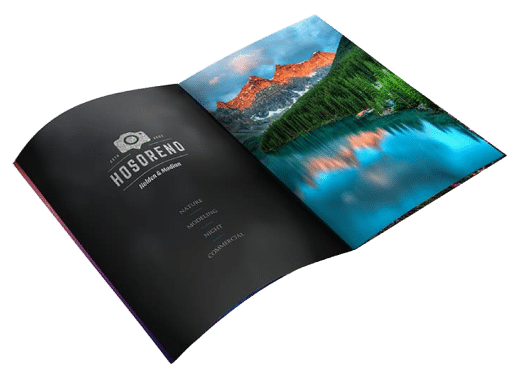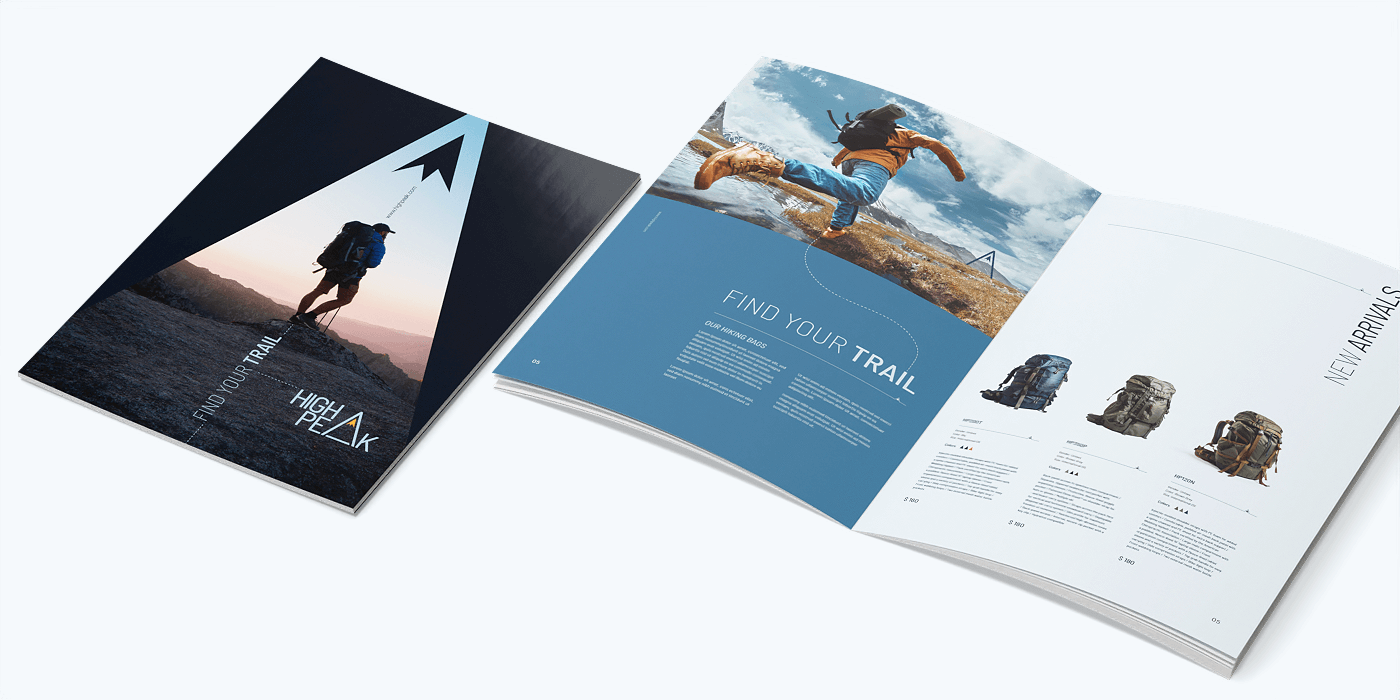The Essential Guide to Understanding Booklet Printing Options and Techniques
The procedure of pamphlet printing entails multiple considerations that can significantly impact the end product. From picking the proper style and size to understanding the subtleties of binding methods, each selection plays an essential function. Additionally, factors such as paper supply and printing strategies more affect the efficiency of the booklet. As one browses these choices, it ends up being crucial to understand how they adjoin and what that means for the total end result.
Comprehending Booklet Layouts and Sizes
When considering pamphlet printing, comprehending the various styles and dimensions available is essential for accomplishing the desired presentation. Booklets can be generated in various layouts, including saddle-stitched, spiral-bound, and perfect-bound, each offering distinctive advantages. Usual sizes vary from conventional letter (8.5 x 11 inches) to smaller choices like A5 (5.8 x 8.3 inches), permitting adaptability based on material and target audience.Selecting the appropriate size can affect both the design and viewers engagement. Bigger dimensions could fit aesthetically driven content, while smaller sized layouts may be a lot more easy to use and portable. Furthermore, the number of web pages impacts the selection of binding technique, as thicker booklets may require stronger bindings. Inevitably, understanding these facets permits a much more customized strategy, making sure that the last item aligns with the intended message and visual, improving the overall efficiency of the interaction.
Selecting the Right Paper Stock

Binding Techniques: Considerations and options
When it comes to binding approaches for brochures, numerous alternatives are offered, each with distinct advantages. Saddle stitch binding uses a cost-effective option for thinner booklets, while ideal binding methods offer a more sleek look for thicker magazines. Wire-O binding stands apart for its longevity and convenience of usage, making it optimal for files that call for adaptability.
Saddle Stitch Binding
Saddle stitch binding offers a practical and economical solution for assembling brochures, making it a popular choice amongst companies and publishers. This binding method entails folding sheets of paper in fifty percent and stapling them along the fold line, producing a neat and well organized look. Normally appropriate for brochures with a reduced page count, saddle stitching is perfect for magazines, pamphlets, and instructional products. The simplicity of this technique enables for fast manufacturing and is usually preferred for brief runs or promotional things. Nevertheless, it is important to keep in mind that saddle stitch binding might not be appropriate for thicker pamphlets, as the spinal column may not hold up under enhanced weight. In general, it stays a dependable choice for several printing tasks.
Perfect Binding Strategies
Perfect binding is a commonly utilized method that provides a professional and refined finish to booklets and magazines. This technique involves gluing the web pages with each other at the spinal column making use of a strong adhesive, enabling a tidy side and the capacity to hold a larger number of web pages contrasted to saddle stitching. Perfect binding is especially ideal for thicker booklets, such as catalogs and yearly reports, where a sturdy, level spine is desired. Furthermore, it provides the alternative for a published cover that can be developed to improve aesthetic charm. Factors to consider such as page count, paper weight, and the meant use of the brochure ought to be taken right into account, as they can influence resilience and general high quality.
Wire-O Binding Choices
Wire-O binding, known for its durability and versatility, offers an exceptional option for booklets that require simple page turning and an expert appearance. This binding method uses a series of metal loopholes that hold pages safely, permitting them to lie level when open. It is especially appropriate for directories, guidebooks, and presentations because of its robust nature. Wire-O binding is offered in various colors and diameters, suiting different page matters and thicknesses. Additionally, it allows the addition of covers and tabs, improving the pamphlet's general visual. Considerations for Wire-O binding consist of the option of cord color, the dimension of the loopholes, and the degree of modification preferred, all of which can greatly affect the end product's look and performance.
Digital vs. Offset Printing: Which Is Best for You?
When picking a printing method for pamphlets, comprehending the distinctions between digital and balance out printing is vital. Digital printing makes use of modern-day innovation to produce premium prints swiftly and economically, making it optimal for brief runs or projects calling for fast turn-around times. It permits customization, providing the ability to publish on-demand with marginal waste.In comparison, offset printing is a standard technique that masters creating huge amounts with constant quality. It includes transferring ink from a plate to a rubber blanket, after that to the paper, which results in exact details and lively colors. However, offset printing typically requires longer configuration times and is a lot more cost-effective for bigger volumes.Ultimately, the choice between electronic and counter printing relies on job requirements, spending plan, and preferred quantity. For you can find out more tiny, time-sensitive jobs, electronic may be the most effective selection, while offset may be preferable for larger, top notch manufacturings.

Designing Your Pamphlet: Tips and Best Practices
When designing a brochure, mindful focus to format, font style option, and shade usage can substantially boost its performance. A well-structured design guides the viewers's eye, while proper typefaces assure readability and communicate the wanted tone. Furthermore, efficient usage of shade can stimulate feelings and emphasize key information, making the general design much more impactful.
Selecting the Right Design
Exactly how can one successfully pick the best format for a booklet? Initially, it is important to assess the pamphlet's function and target market. A tidy, arranged format improves readability and interaction. Utilizing a grid system can assist in aligning aspects consistently, creating a specialist look. Additionally, integrating visual pecking order through differing dimensions and placements of photos and text can direct the visitor's eye and highlight vital information. It is likewise important to leave enough white space, which avoids congestion and permits for better emphasis. Ultimately, examining different layouts through mock-ups can give understanding right into how the style executes in real-world situations, making sure that the end product satisfies both useful and aesthetic needs.
Selecting Ideal Fonts
An appropriate font can greatly enhance the total layout of a brochure, matching the layout and reinforcing the web content's message. The selection of typefaces must think about readability, specifically for body message, as it guarantees the info is obtainable to all visitors. Sans-serif fonts are typically favored for electronic styles, while serif fonts can offer a standard feeling in printed materials. It's suggested to restrict font selections to 2 or 3 to preserve aesthetic comprehensibility. Additionally, font style size plays an important function; headings ought to be not overwhelming however distinctive, while body text should fit for analysis. When selecting fonts, placement with the booklet's motif and target market is crucial for efficient interaction and aesthetic allure.
Efficient Use of Color
Shade works as an effective tool in booklet style, forming assumptions and leading reader emotions. It can evoke sensations of peace, enjoyment, or depend on, depending on the shades chosen. Developers need to consider color concept concepts, making certain that the chosen palette straightens with the pamphlet's message and target audience. As an example, using warm colors like red and orange can produce necessity, while cooler tones like green and blue foster tranquility.Additionally, contrast plays a vital role; corresponding shades can improve readability and aesthetic allure. Uniformity in shade use throughout pages even more enhances brand name identification and communication. Inevitably, effective shade execution not just records attention but also reinforces the pamphlet's purpose, making it an essential aspect of successful layout.
Ending Up Touches: Coatings and Unique Effects
While numerous consider the content and layout of a booklet the most critical elements, the ending up touches, such as coverings and special effects, play an important function in boosting its total allure. Coatings can supply security and longevity, making certain that the brochure stands up to deterioration. Matte finishes offer a sophisticated, non-reflective surface area, while shiny coatings can make colors show up more attractive and vibrant. Special results, like embossing or aluminum foil stamping, include a tactile dimension that can develop an unforgettable perception. These techniques can highlight certain areas, drawing interest to essential information or producing aesthetic rate of interest. In addition, UV layer can give a high-shine surface that elevates the general look.Together, these finishing touches not just enhance the pamphlet's visual however also connect expertise and attention to information, ultimately leaving a long lasting impact on the visitor.
Cost Considerations for Pamphlet Printing
Comprehending the numerous expense considerations for booklet printing is necessary for companies and companies aiming to maximize their budgets. Secret factors influencing expenses include the selection of paper, binding, and ink methods. Better materials, such as premium paper or specialized inks, normally increase the general cost. In addition, the size and page count of the brochure play a significant role; bigger booklets call for more sources and time to produce.Another essential factor to consider is the printing method, whether electronic or offset, as each has its own rates structure and viability for different amounts. Businesses ought to likewise factor in layout costs, which can differ based upon intricacy and the usage of specialist solutions. Inevitably, delivery and handling costs can add to the overall, particularly for huge orders. By evaluating these components, companies can make educated choices that straighten with their economic capacities while attaining the wanted high quality in their published products.
Frequently Asked Questions
What Are the Ecological Influences of Pamphlet Printing?
The ecological effects of pamphlet printing consist of deforestation from paper production, carbon emissions from transportation, and waste generation from thrown out products - Booklet Printing. Lasting techniques, such as making use of recycled paper and green inks, can alleviate these impacts
Exactly How Can I Make Certain Shade Precision in My Brochure?
To guarantee color accuracy home in a booklet, one need to make use of calibrated monitors, use professional color accounts, carry out test prints, and pick high-grade printing solutions that use shade matching and proofing choices for best outcomes.
What Is the Normal Turnaround Time for Pamphlet Printing?
The normal turn-around time for booklet printing varies relying on the complexity and quantity - Booklet Printing. Typically, it varies from a couple of days to two weeks, affected by elements such as publishing techniques and finishing requirements
Exist Minimum Order Quantities for Booklet Printing?

Can I Print Brochures in Multiple Languages?
Publishing booklets in several languages is feasible. Several printing services supply options for multilingual or bilingual designs, enabling efficient communication. Mindful preparation warranties that make components fit different languages without jeopardizing readability or appearances. In addition, factors such as paper supply and printing methods additional affect the performance of the brochure. When thinking about brochure printing, understanding the different formats and sizes offered this hyperlink is essential for accomplishing the desired presentation. When choosing a printing technique for brochures, comprehending the differences in between electronic and counter printing is necessary. Furthermore, the size and page count of the booklet play a substantial role; bigger booklets require more sources and time to produce.Another vital consideration is the printing method, whether digital or countered, as each has its own rates framework and suitability for different amounts. The ecological impacts of booklet printing consist of logging from paper production, carbon exhausts from transport, and waste generation from thrown out materials.